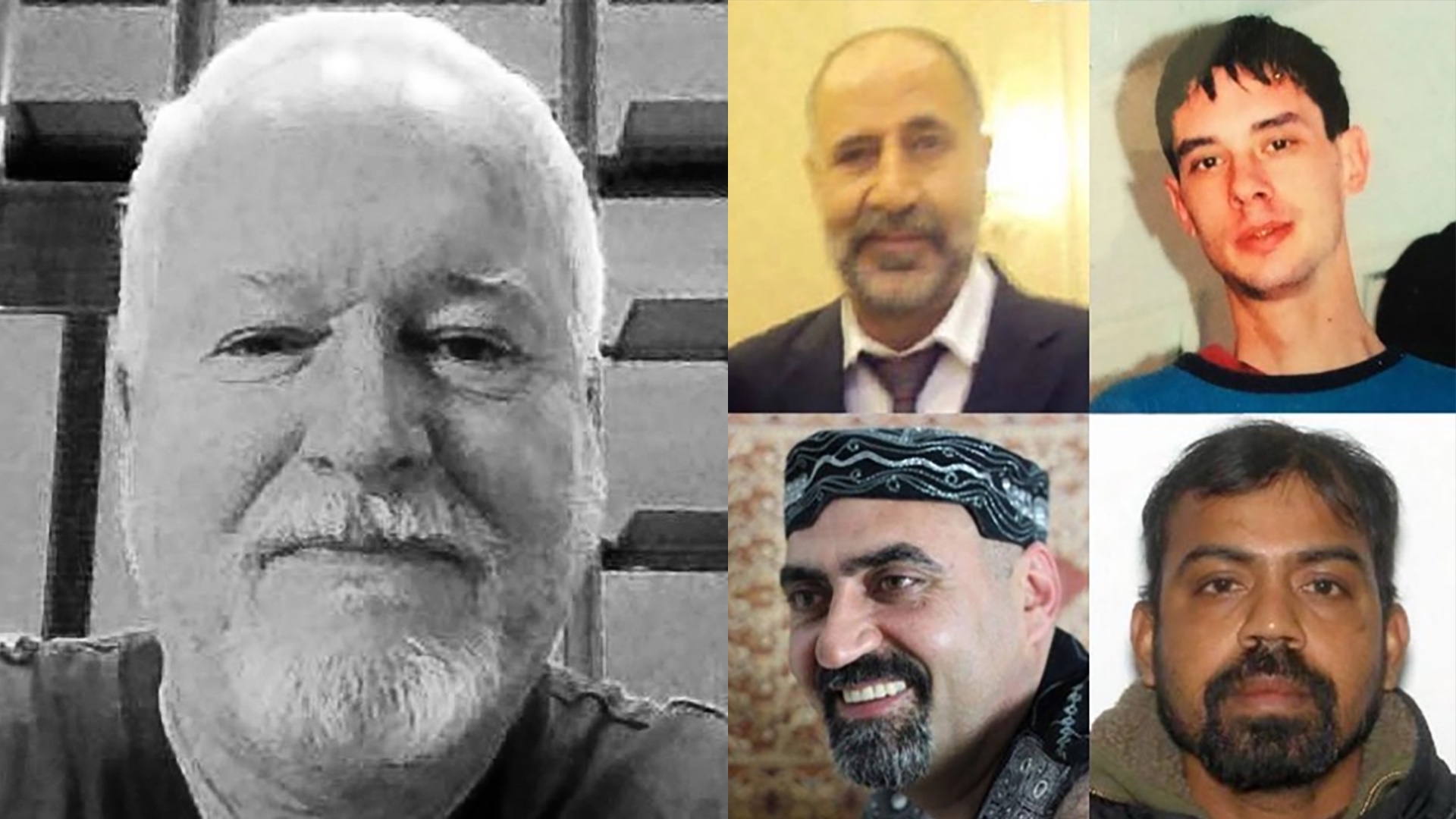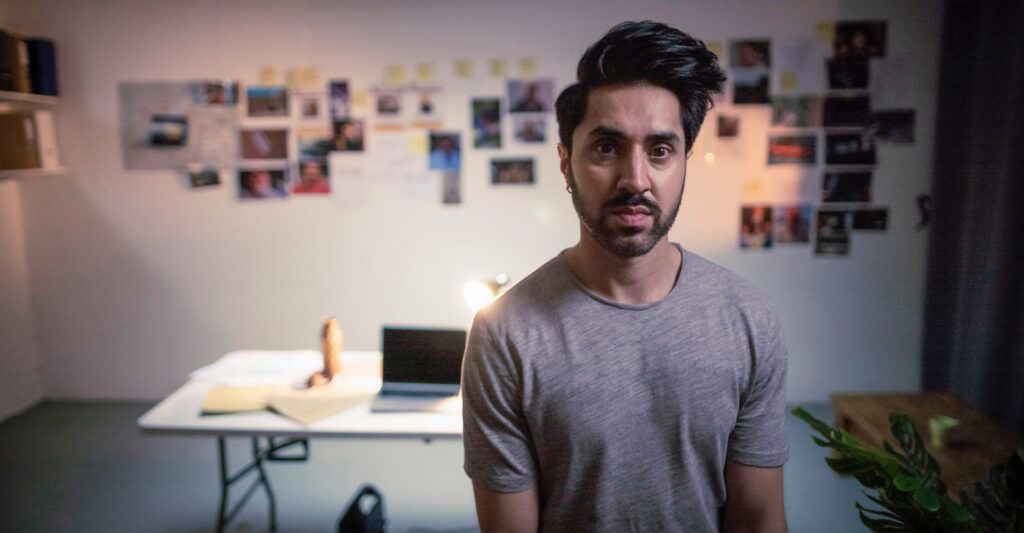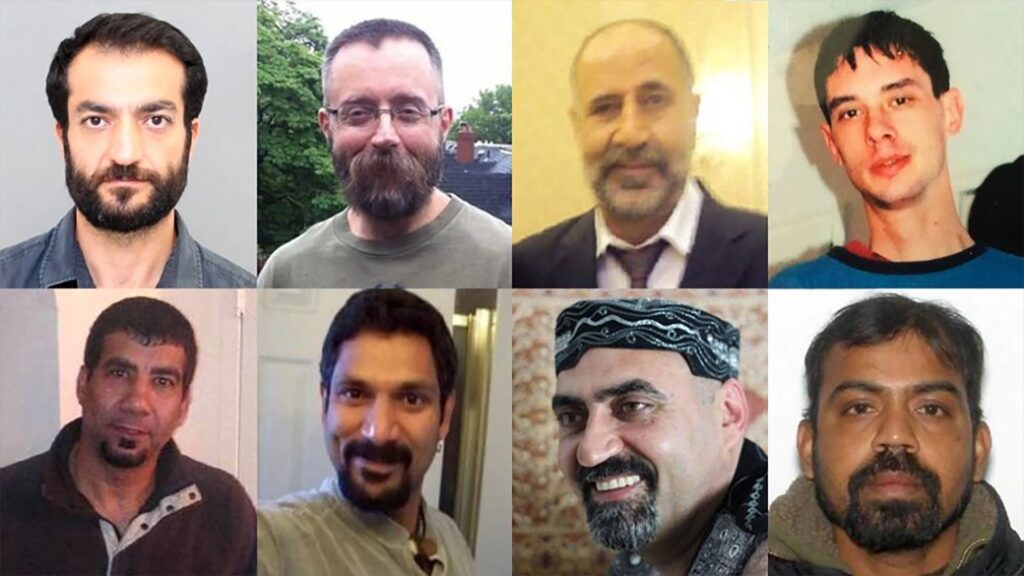The Santa Claus Killer: Who is Bruce McArthur, who targeted gay and bi men?
Over the course of seven years in Toronto, eight men who identified as gay or bisexual disappeared without trace. Finally, the local police realised that a serial killer was at large…

Although Bruce McArthur, who came to be known as the ‘Santa Claus killer’, is now behind bars, how did he remain free to kill for so long? BBC reporter Mobeen Azhar, who travelled to the Canadian city in search of answers, tells Cliff Joannou more.
On the surface, Bruce McArthur led an ordinary existence as a married man living with his wife and two children in Toronto, Canada.
To all appearances, he was a kind, friendly guy — so much so that he played Santa during the festive season at the local mall. As time went on, he was found to have been living a double life as a closeted gay man.
McArthur was eventually outed, and his marriage ended. In the years that followed, he began frequenting Toronto’s gay scene, meeting men for sex, including escorts, and engaging in chemsex and violent behaviour until one day he killed the first of his eight (known) victims. Often using substances like GHB during his assault, to dispose of the bodies McArthur dismembered them and buried the parts in the grounds and plant pots of one of the unsuspecting people who employed him as a gardener.
A master manipulator, in 2003, McArthur was found guilty of having violently attacked a man with a metal pipe in 2001. The judge believed McArthur was remorseful and he was given a two-year conditional sentence; he was also banned from Toronto’s gay village and from spending time with male prostitutes. Chillingly, in 2013, he was interviewed as a witness by police in connection with the disappearance of two of his victims who he had been linked to through a dating website. He avoided suspicion. And in 2016, he was reported to the police by a man who said McArthur had attacked him. Despite his 2003 conviction, the serial killer managed to persuade the police it had all been a misunderstanding and he was released.
McArthur’s killing spree was eventually discovered in June 2017 when police were forced to act after friends of his final victim, Andrew Kinsman, began a high-profile search for him. When the bodies of his victims were eventually discovered, McArthur, then 67, pleaded guilty in court in 2019, leading to a conviction without trial — 25 years without parole. But were there other undiscovered victims? How did McArthur manage to manipulate the police — and many others — so easily, and for so many years? With several questions left unanswered, reporter Mobeen Azhar [below] went to Toronto to investigate for the BBC.

When did you first hear about the Bruce McArthur case?
I first heard about the case back in 2017 shortly after McArthur was arrested. Normally, in a case like this the prosecution and the defence will interrogate all the evidence over a number of weeks.
When McArthur went to trial, he pled guilty. Which meant that process didn’t happen in the way many expected it to. As a result, many family members and loved ones of the men who were murdered have questions that remained unanswered. It was then that I decided
I should go to Toronto and cover the story.
The evidence for conviction was overwhelming, so I’m not surprised McArthur pled guilty. However, the lack of discussion in open court about the evidence meant that many people were left with questions about how McArthur got away with murder over a seven-year period. And also how he was able to exploit so many people. I started working on the story not just to understand what happened but to try to understand why and, most importantly, if there are any lessons we
can learn.
Why do you think many of McArthur’s victims were brown-skinned people — like Selim, Skandaraj and Saroush?
Almost all of the men McArthur targeted had overt vulnerabilities. All of the brown-skinned men had lived the immigrant experience. Most didn’t feel they could be open about their sexuality. From spending time speaking to friends, family and former lovers, I know there was a major element of shame and guilt around sexuality in the lives of many of these men. For example, meeting the family of Majeed Kayhan. It was difficult to hear them tell me that they didn’t believe Majeed was gay because “he was a manly man”. The family were grieving the murder of a loved family member. So I wasn’t going to start lecturing them about sexuality and gender stereotypes. However, I do believe that if you’re not able to be honest about who you are, who you love and who you spend your time with, that can leave you open to exploitation.
Do you feel there is an element of racism in why the disappearance of these men were not red flags to the police?
I think the truth is way more complicated than just racism. For example, Dean Lisowick was homeless and therefore never even reported missing. Kirushna Kumar Kanagaratnam had his claim for asylum rejected. So his family never reported him missing for fear of getting him deported.
I spoke to a white gay friend of one of the Afghan men who was murdered. He said he assumed his friend had been killed by his family because of his sexuality. There’s maybe no bad intention there, but these weird assumptions about culture are so unhelpful. It’s clear that the police could have done things better, but if we really want to make things better, we’ve got to engage with the complexity of the case and what went wrong.

Do you believe the disappearance of trans woman and sex worker Alloura Wells, whose badly decomposed body was found lying in a Toronto ravine, was linked to McArthur?
There’s no evidence to suggest Alloura Wells’ death was linked to McArthur. This case illustrates once again that sex workers and trans people can be the target of violence. We must do more to ensure all of us, regardless of gender identity and occupation, are safe.
You interview a drug user at a sex party in Toronto where a guy admits rather indifferently that he might have been sexually assaulted after he’d been given GHB by another man unknowingly. How did that statement make you feel?
To be frank, I was grateful that the contributor spoke so openly on camera, but I was not shocked. I know the scene well enough in cities like New York, Toronto and London to understand that the culture around chemsex is not always kind or compassionate. I’ve had conversations where friends have referenced assault and even rape in the context of chemsex without batting an eyelid. I think this is an important part of the series because McArthur is known to have used GHB with at least some of the men he was having sex with.
We know chems are most often used consensually. However, as a community we need to challenge the culture in which it’s acceptable to step over someone that’s passed out on G just because you’re going after a piece of dick. So many gay men are dealing with shame and trauma linked to their sexual preferences and the culture of chemsex can numb those feelings.
We must think about how we can look out for each other more. If someone passes out at a chemsex party, help them. Get them some water or move them to a safe space. Don’t trivialise consent. I want anyone that watches the series to think about how we can look out for each other.
It wasn’t until friends acted on the disappearance of Andrew Kinsman in 2017 that the police finally caught McArthur. When you met the police, did you feel there was any remorse for the fact that so many men had vanished over such a short space of time without it raising suspicion?
I think the police in Toronto are full of remorse about what happened. Detective Sergeant Hank Idsinga, who leads the force, spoke candidly with me about wanting to win the trust of the LGBTQ communities. We have to understand that we are dealing with the weight of history. Many LGBTQ people have felt under-protected and over-policed for their entire lives. That won’t change overnight. It is heartbreaking that some LGBTQ people with information about the case may not have gone to the police because they didn’t feel comfortable. No one benefits. Everyone loses. We have to change this.
Police eventually found 18 photos of Andrew Kinsman’s dead body on McArthur’s computer as well as photos of Selim’s body. Why do you think McArthur documented their murders?
This question has kept me awake for many nights. I don’t think we’ll ever know for sure. There is a lot of evidence to suggest McArthur was a trophy collector. I believe he was fuelled by the ability to assert force over the men he murdered. Taking pictures of men after he murdered them was another way of asserting power, even in death. It’s so macabre that it’s difficult to think about.
The anonymous interviewee ‘Isaac’ called the police after McArthur attacked him. On top of this, McArthur was banned by a judge from going to the gay village after he assaulted a man over the head with a metal bar. Why do you think McArthur was so good at escaping these situations?
McArthur was a master manipulator. I learnt how he was able to manipulate lovers, police and even the courts. I believe he spent a lot of energy and time in calculating how to avoid detection and justice. The fact that he rearranged body parts in plant pots in the garden of clients tells us a lot. McArthur was fuelled by this sense of control over his victims but also over anyone he interacted with. I believe McArthur saw the whole thing as some kind of horrific sport.
We’ve seen similar cases in the UK, most recently with Stephen Port in London. What parallels did you find with McArthur’s case?
There are major parallels. The control. The use of substances. The manipulation of the police. I think McArthur is such an anomaly as he was relentlessly cruel even after the murders. For example, he helped Skanda’s friends hand out ‘missing people’ flyers after Skanda’s murder [McArthur had employed Skanda and been in a relationship with him]. There is such manipulation and cruelty in that. Port was in many ways the archetype ‘loser’. McArthur was a “great guy” according to many that knew him before his murders came to light. He dressed up as Santa Claus and spoke about the joy of working in a multicultural shopping mall. In so many ways, he came across as a good guy and a model citizen. Some of his friends told me they believe there were actually two people inhabiting one body. The man they knew then and the monster we know now.
What shocked you most in your investigation?
The level of evil in McArthur is very difficult to process. The trophy collection involving dressing dead men up in a fur coat and taking photographs is like something out of a horror movie. All of that stuff will stay with me forever.
What would you like to ask McArthur if you could interview him?
I’ve interviewed men in prison including murdered and convicted terrorists. I always look for remorse. I want to know if McArthur is sorry. The question of what happened to McArthur to turn him into the monster we know is fascinating, but the series was never intended to be about him. The series is about the much-loved men we lost. It’s also about police conduct, vulnerability and how our communities can better take care of each other. I want the series to inspire conversations about compassion.
Santa Claus: The Serial Killer is on BBC iPlayer.
A survivor’s story
A former escort, Josh Cleaver, 34, is now a programme coordinator for Substance Use and Contingency Management in Vancouver, Canada. He met Bruce McArthur 10 years ago when he was hired by him for sex.
When did you first meet McArthur?
I met him back in 2012 through Craigslist where I had put out an ad as an escort, to which he responded. After his response I met him within a couple of hours.
What was your relationship with him?
He was a client.
Can you tell us what happened when you met McArthur?
He was friendly. Looking back, it’s scary how friendly he was. However, I did have really shaky legs despite feeling normal — it was as though my subconscious was trying to tell me something. When he took my blindfold off, he had a scary, cold, dead look in his eyes, but I felt aloof and didn’t think much of it other than he seemed a bit wired [on drugs]. After that, he asked if I wanted to go for breakfast and we went around the corner from his apartment.
You said McArthur had a “cold, dead look in his eyes” when the blindfold was taken off. How do you feel now about that incident?
That look in his eyes still scares me to this day. Looking back, I can see the red flags, but at the time I felt the situation was normal.
How did you feel when you found out that McArthur had been arrested for murder?
At first, I didn’t recognise him, until further images came out, one of them being the one I had seen on Craigslist, so I then realised who it was. It messed me up as I didn’t feel as though I could cry about it. As I was considered to be one of the lucky ones. So I didn’t get the support that I needed at the time.
